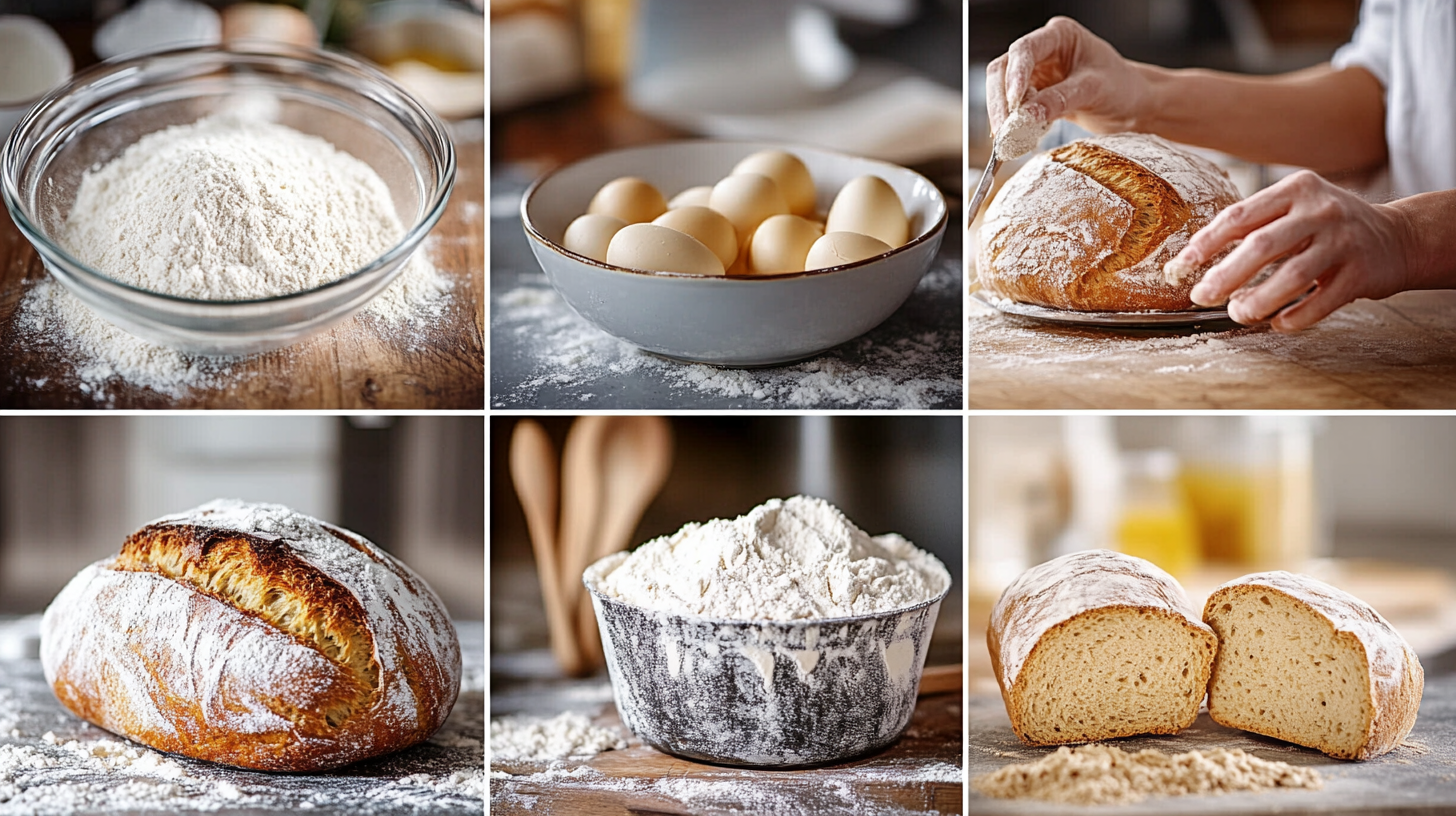Baking moist homemade bread is a rewarding experience, especially when it comes out soft and delicious. However, achieving that ideal moisture can be tricky. By choosing the right ingredients and techniques, you can consistently bake homemade bread that stays soft, fresh, and moist. In this guide, we’ll cover every step to help you master moist homemade bread.
Understanding Moisture in Bread
The secret to moist homemade bread lies in understanding how ingredients and baking methods impact moisture. Moisture is crucial because it gives bread a soft texture and keeps it from drying out. By picking the right flour, adding fats, and balancing hydration, you can make sure your bread is perfectly moist. For example, consider using a flour with higher gluten content, which helps trap moisture and create a tender crumb. Learn more about flour selection for different bread types to ensure you’re using the best base for moist homemade bread.
Essential Ingredients for Moist Homemade Bread
Creating moist homemade bread starts with the right ingredients. Here’s what to focus on:
- Flour: Using bread flour, rather than all-purpose flour, can enhance moisture retention because it has more protein. This helps the gluten hold moisture, creating a soft texture.
- Yeast and Sugar: Together, yeast and sugar help in fermentation, creating carbon dioxide bubbles that make the bread light. Sugar also adds mild sweetness and helps retain moisture.
- Fats and Oils: Ingredients like butter, milk, and oil add moisture, making the bread soft and tender.
- Moisture Enhancers: Eggs, yogurt, and sour cream add richness and keep homemade bread moist for longer.
For more tips on using these ingredients to create soft bread, see this guide on fluffy bread textures.
Techniques to Achieve Moist Homemade Bread
In addition to ingredients, there are techniques that can help you achieve moist homemade bread. Let’s go through each one.
1. Mixing and Kneading
- Mix Well: First, mix all ingredients well to form a dough with a strong gluten network. This helps hold moisture and keeps the bread soft.
- Kneading: Kneading activates gluten, creating a network that helps retain moisture. Knead until the dough is smooth and stretchy.
2. Temperature Control and Proofing
- Warm Proofing Environment: Proofing your dough in a warm, humid place keeps it moist and helps it rise better. This also aids fermentation, which makes homemade bread soft.
- Moderate Baking Temperature: Baking at a moderate temperature prevents moisture from evaporating too quickly. A “low and slow” bake is often best for tender bread.
3. Steam Baking
Adding steam to your oven during baking prevents the crust from setting too quickly, allowing the bread to expand and hold more moisture. Simply place a pan of water on the oven floor or spray water on the bread before baking.
4. Preventing Over-Baking
Over-baking dries out homemade bread, so aim for an internal temperature of 190°F–200°F to ensure it’s done but still moist. Use a thermometer for the best accuracy, as this ensures perfect moist homemade bread.
5. Cooling and Storing Bread
Once the bread is baked, let it cool fully on a rack. This prevents sogginess caused by condensation. Store bread in an airtight container or a cloth bag at room temperature to keep it moist.
Bread Types and Their Moisture Profiles
Different types of homemade bread have unique moisture profiles. Here’s a look at some popular types and their specific textures:
- Soft Sandwich Bread: Often enriched with fats like butter or milk, sandwich bread is soft, with great moisture retention.
- Artisan Sourdough: Sourdough has a thick crust but can be moist inside if you use the right hydration level.
- No-Knead Peasant Bread: This bread type is typically moist and spongy due to high hydration levels.
- Enriched Breads (e.g., Brioche): High in fats and sugar, these breads are very moist and soft, thanks to added ingredients like butter and eggs.
To learn more about different bread textures and types, you may want to look at this bread guide for baking styles.
Common Problems and Solutions for Dry Homemade Bread
Sometimes, bread doesn’t turn out as moist as you’d like. Below are common issues and simple solutions for keeping homemade bread soft and moist:
- Dry, Crumbly Texture: Often, dryness results from a lack of fat or improper proofing. Adding butter or milk can improve moisture retention.
- Dense, Heavy Bread: A dough conditioner, like vital wheat gluten, can help lighten the bread’s texture and retain moisture.
- Hard Crust: Baking with steam or covering the bread with foil can keep the crust soft, which is ideal for moist homemade bread.
FAQs on Moist Homemade Bread
Q: How do I keep bread moist after baking?
A: Store bread in a sealed container or wrap it in a cloth. Avoid refrigeration, as it can speed up drying and make homemade bread less enjoyable.
Q: Why does my homemade bread dry out the next day?
A: If your bread is stored in a dry area or low humidity, it may lose moisture. Try freezing it for longer storage.
Q: Can I add extra water to make the dough moister?
A: Yes, but balance it with high-gluten flour to maintain structure. This helps your bread stay soft without becoming too dense.
Q: Which ingredients help make bread soft and moist?
A: Fats like butter, milk, and yogurt add moisture, giving homemade bread a tender texture.
Q: Why does the crust sometimes get too hard?
A: Over-baking or not using steam can result in a hard crust. To keep it softer, add steam or cover the bread for part of the baking time.
Additional Tips for Moist Homemade Bread
Finally, here are a few more tips for baking moist homemade bread every time:
- Store in a Humid Environment: Avoid refrigeration, as it can dry bread out faster.
- Use Pre-Ferments: Methods like poolish or biga add hydration and flavor, improving the texture of your bread.
- Adapt for Climate: In dry climates, add a bit more water to your dough. In humid climates, use slightly less to maintain softness.
Conclusion
In conclusion, achieving moist homemade bread is possible with the right ingredients, techniques, and storage methods. Whether you’re baking a soft sandwich loaf or rustic artisan bread, these tips will help you master the art of creating delicious, tender bread. Enjoy experimenting with different methods to discover what works best for you!


